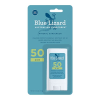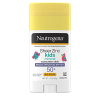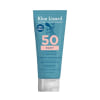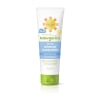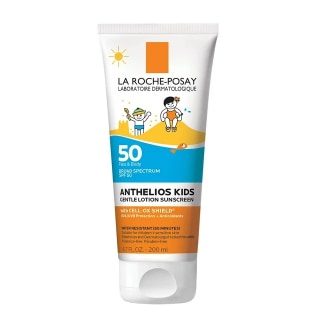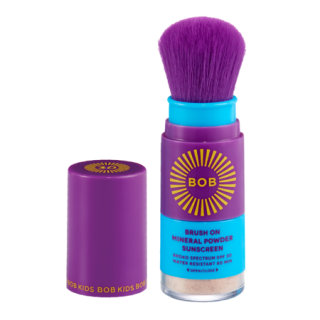Wearing sunscreen is a must, especially for kids. In fact, it’s crucial for all children over six months of age, regardless of skin tone, experts say. “It helps prevent damage from the sun that goes beyond the painful effects of sunburn, including increased risk for skin cancers down the line,” says Dr. Rebecca Carter, a pediatrician at the University of Maryland Children’s Hospital.
I spoke to dermatologists about what to look for in a kid-friendly sunscreen and how to properly apply it. Below, I rounded up experts’ recommendations for the best kids sunscreens to shop, including water-resistant, powder and stick sunscreens.
SKIP AHEAD How I picked the best sunscreens for kids | Best sunscreens for kids | What is the safest sunscreen for kids? | Other sun safety tips for kids
How I picked the best sunscreens for kids
In order to compile the best sunscreens for kids below, I spoke to four dermatologists who recommend the following factors to keep in mind:
- Formulation: For your child’s sensitive skin, you should stick to a mineral sunscreen (also known as a physical blocker) that has zinc oxide or titanium dioxide instead of a chemical base. A mineral sunscreen won’t absorb into the skin, but rather sits on top of it like a barrier, which helps avoid irritation. The sunscreen should also be labeled noncomedogenic, meaning it won’t clog your child’s pores.
- SPF protection: Sun protection factor, or SPF, measures your level of protection against a sunburn, experts told us in our guide to sunscreen. Your child’s sunscreen should have a minimum SPF 30 protection, though SPF 50 or higher is ideal, experts say.
- Consistency: Look for creams and lotions, which experts say are the most effective to use on your child as they provide a greater amount of coverage when compared to spray sunscreens. Stick sunscreens are also recommended, but they may be harder to lather onto your child’s skin.
Best sunscreens for kids
All of the following sunscreens for kids were recommended by our experts and align with their guidance.
Best overall: Blue Lizard Kids Mineral Sunscreen SPF 50
- Color-changing bottle
- Easy to apply stick
- Unscented
- Leaves a white cast
Blue Lizard’s mineral sunscreens are a favorite among the experts I spoke to. “I love the smart cap technology that helps to teach kids about UV rays — the cap or bottle turns pink in harmful UV light,” says Dr. Hadley King, a board-certified dermatologist in New York City. The sunscreen is water- and sweat-resistant for up to 80 minutes and has SPF 50 protection. It’s also free of both parabens and fragrances, making it a safer bet for kids with sensitive skin, according to the brand. This stick version is also available as a mineral-based lotion, which has a chemical ingredient in addition to mineral filters, according to the brand.
SPF rating: 50 | Water-resistance: 80 minutes | Sunscreen type: mineral | Consistency: stick | Fragrance-free: yes
Best for very sensitive skin: Aveeno Kids Continuous Protection Mineral Sunscreen SPF 50
- Non-greasy
- Doesn't irritate eyes/skin
- Lotion consistency
- Leaves a white cast
Experts cite Aveeno as a quality brand when looking for a kids-safe sunscreen, especially if they have sensitive skin. Specifically designed for kids, this mineral sunscreen lotion has skin-soothing oat and won’t cause irritation or stinging, according to the brand. The lotion also has a non-greasy and fragrance-free formula.
SPF rating: 50 | Water-resistance: 80 minutes | Sunscreen type: mineral | Consistency: lotion | Fragrance-free: yes
Best stick: Neutrogena Kids Sheer Zinc Sunscreen Stick SPF 50
- Easy to apply stick
- Won't leave a white cast
- Stick formula can crack
Neutrogena’s Sheer Zinc Sunscreen Stick is a favorite of King’s for kids because it has a hypoallergenic formula and it’s free of fragrances and dyes, which helps prevent irritation on your child’s sensitive skin. A stick sunscreen is also great for noses, faces and even the scalp, which many people tend to forget about, says King.
SPF rating: 50 | Water-resistance: 80 minutes | Sunscreen type: mineral | Consistency: stick | Fragrance-free: yes
Best for babies: Blue Lizard Baby Mineral Sunscreen SPF 50+
- Safe for sensitive skin
- Soothes irritation
- Not sticky or oily
- Nothing to note at this time
Another expert-recommended option from Blue Lizard, this 100% mineral sunscreen lotion is made specifically for babies’ sensitive skin. It’s free of fragrances and other irritants, plus it has calendula extract and organic aloe to soothe delicate skin, according to the brand. Blue Lizard also offers this sunscreen in a stick version for babies. The brand recommends applying the sunscreen on dry skin at 15 minutes before sun exposure. Keep in mind if your child is under six months of age, make sure to ask your pediatrician before applying any sunscreen.
SPF rating: 50+ | Water-resistance: 80 minutes | Sunscreen type: mineral | Consistency: lotion | Fragrance-free: yes
Best with no white cast: La Roche-Posay Anthelios Kids Gentle Lotion Sunscreen SPF 50
- Good for sensitive skin
- Fragrance-free
- Provides great coverage
- Leaves a white cast
If you have an older child or don’t mind a chemical sunscreen, this La Roche-Posay lotion, which is recommended for kids six months and older and designed for the face and body, is one of King’s favorites. Since it has chemical filters, it’s easier to blend and won’t leave a white cast on their skin, says King. It also has glycerin to help keep their skin moisturized, according to the brand.
SPF rating: 50 | Water-resistance: 80 minutes | Sunscreen type: chemical | Consistency: lotion | Fragrance-free: yes
Best lotion: Banana Boat Kids 100% Mineral Sunscreen Lotion SPF 50
- Lotion consistency
- Great for sensitive skin
- Family size
- Can be messy to apply
This Banana Boat sunscreen has the National Eczema Association’s Seal of Acceptance, which means it’s suitable for people, including kids, with eczema and sensitive skin. It’s fragrance- and oil-free, so it won’t leave a greasy feel after applying it, according to the brand. It’s also highly rated, with a 4.5-star average rating from over 1,000 reviews on Amazon. If you’re looking for a sunscreen that’ll absorb more quickly into the skin, Banana Boat also has a kids sport sunscreen that’s water-resistant for up to 80 minutes.
SPF rating: 50 | Water-resistance: 80 minutes | Sunscreen type: mineral | Consistency: lotion | Fragrance-free: yes
Best powder: Brush on Block Kids Mineral Powder Sunscreen SPF 30
- Easy to apply on face
- Fragrance-free
- Not as much coverage
- May be difficult to dispense
This brush-on sunscreen powder comes recommended by King because you can throw it in your bag for easy reapplication. “The powder format is so easy to apply, so kids won’t complain about goopy sunscreen — there’s no smell and it’s translucent,” she says. “The brush is soft and brightly colored, so it’s fun to apply.”
SPF rating: 30 | Water-resistance: 80 minutes | Sunscreen type: mineral | Consistency: powder | Fragrance-free: yes
Best hydrating: Cerave 100% Mineral Sunscreen SPF 30
- Oil-free
- Good for sensitive skin
- Thicker formula
- Leaves a white cast
Cerave’s products are oil-free, fragrance-free and suitable for sensitive skin in both kids and adults, experts say. The mineral-based sunscreen has hyaluronic acid, which helps retain the skin’s natural moisture. Since it can leave a white cast, the brand recommends thoroughly massaging the cream on one small area of the body at a time about 15 minutes before sun exposure. If you don’t want to go through the hassle of rubbing this sunscreen on a toddler that doesn’t sit still, King recommends the stick version of this sunscreen that goes on clear.
SPF rating: 30 | Water-resistance: 90 minutes | Sunscreen type: mineral | Consistency: lotion | Fragrance-free: yes
Best water-resistant: Babyganics Baby Sunscreen Lotion SPF 50
- Great for sensitive skin
- Provides great coverage
- Fragrance-free
- Thick formula
- Leaves a white cast
Carter recommends this mineral-based, water-resistant Babyganics sunscreen for young kids with sensitive skin. It has SPF 50 protection and a mineral base containing both zinc oxide and titanium oxide. The sunscreen is meant to be hypoallergenic and tear-free.
SPF rating: 50 | Water-resistance: 80 minutes | Sunscreen type: mineral | Consistency: lotion | Fragrance-free: yes
What is the safest sunscreen to use on kids?
Dermatologists told me sunscreens should have a minimum of SPF 30 to provide an adequate amount of protection, regardless of age. “[But] I think SPF 50 or higher is better, as most people put on a much thinner layer of sunscreen than the sunscreen manufacturers recommend and use for their testing to quantify the SPF level,” says Dr. Jennifer Mancuso, a pediatric dermatologist at the University of Michigan Health.
Just as importantly, you should look for a kids’ sunscreen that’s broad spectrum, meaning it’s “protecting against UVA, which causes tanning and skin aging, as well as UVB, which causes sunburns and skin cancers,” says Mancuso.
Mineral sunscreen vs. chemical sunscreen
Stick to mineral (also known as physical) sunscreens rather than chemical ones, the latter of which are absorbed into the skin and can be more irritating, says Carter. “For infants and young children, it’s typically recommended to use mineral sunscreens made with zinc oxide and titanium dioxide — these are more stable and less irritating or allergenic for sensitive skin,” says Mancuso.
Some sunscreens labeled “mineral-based” may contain some chemical components, but are still suitable for older kids, says Carter (just make sure to check the ingredients list). However, babies and young children between six months old and two years old should use mineral-only sunscreen to avoid any potential irritation on their sensitive skin, says Dr. Karan Lal, a board-certified dermatologist and committee chair of the Society for Pediatric Dermatology. (You should avoid using sunscreen on infants under six months old and stick to sun-protective clothing instead, according to the FDA.)
Because mineral sunscreens tend to leave more of a white sheen on the skin, some people may prefer to use chemical sunscreen. Older children, teenagers and adults should be fine to use chemical sunscreens as a last resort, experts say. However, the FDA says that active ingredients in chemical sunscreens, like oxybenzone and octinoxate, need to be studied more before they can be deemed safe and effective by the organization.
Other sun safety tips for kids
While applying (and reapplying) sunscreen throughout the day does offer an important layer of protection for kids, there are other steps you can (and should) take to keep your kids safe from the sun’s harmful rays. The experts I spoke to recommend the following sun safety tips:
- Avoid taking your child out during peak UV hours. “Seek shade whenever possible and avoid prolonged sun between 10 AM and 2 PM when the sun is strongest,” says Lal.
- Opt for protective clothing and accessories. This includes UPF clothing, which will offer full coverage, like long sleeves and sun-protective rash guards, along with wide-brimmed hats and UV-blocking sunglasses when they’re outside, says King.
- Ensure there’s always a covered area. “I recommend purchasing a kid tent to use at the beach to help their kids stay protected during downtime,” says Lal.
Meet our experts
At NBC Select, we work with experts who have specialized knowledge and authority based on relevant training and/or experience. We also take steps to ensure that all expert advice and recommendations are made independently and with no undisclosed financial conflicts of interest.
- Dr. Hadley King is a board-certified dermatologist in New York City.
- Dr. Rebecca Carteris a pediatrician at the University of Maryland Medical Center and assistant professor of pediatrics at the University of Maryland School of Medicine.
- Dr. Jennifer Mancuso is a pediatric dermatologist at University of Michigan Health.
- Dr. Karan Lal is a board-certified dermatologist and committee chair of the Society for Pediatric Dermatology.
Why trust NBC Select?
I am an updates editor at NBC Select who has covered a variety of children’s wellness topics, including electric toothbrushes, bikes and rolling backpacks. For this piece, I interviewed four dermatologists and researched dozens of sunscreens for kids on the market.
Catch up on NBC Select’s in-depth coverage of tech and tools, wellness and more, and follow us on Facebook, Instagram, Twitter and TikTok to stay up to date.

